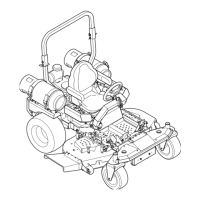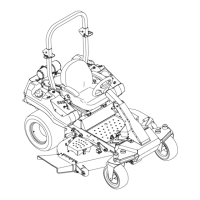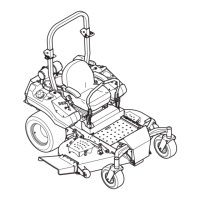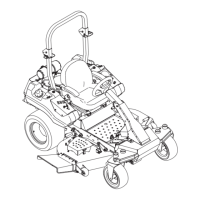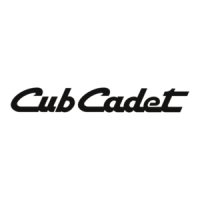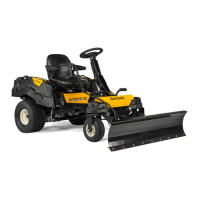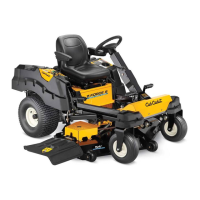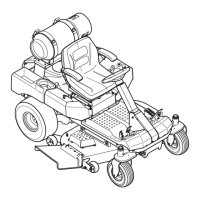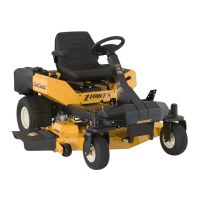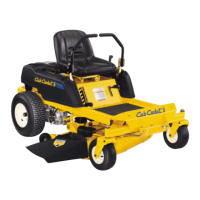28 se c t i O n 6— Ma i n t e n a n c e & ad j u s t M e n t s
Fuel System
fuel tank and fuel pump. It should be inspected daily and
purged of any contaminents.
2.
type.
The Main Fuel Filter is a spin-on cartridge.
Air Cleaner
Hydraulic Oil
WARNING! Never overfill the hydraulic units.
Damage can occur if the oil level is not within the
proper operating range.
NOTE: When adding hydraulic oil, do so in small quantities and
recheck the oil level before adding more. It is important that you
do not overfill the reservoir.
Battery Maintenance
The battery is filled with battery acid and then sealed at
fill caps and check the level of the liquid electrolyte in the
battery. If the level in any of the six cells has dropped below
the bottom of the split ring inside the fill hole, refill the cell
with distilled water.
terminal sealer, or coat the terminals with a thin coat of
grease or petroleum jelly, to protect against corrosion.
Always keep the battery cables and terminals clean and
free of corrosion.
Avoid tipping. Even a sealed battery will leak electrolyte
when tipped.
WARNING!
emit explosive gases. Use extreme caution when
handling batteries. Keep batteries out of the reach
of children.
Engine Coolant
Checking Engine Coolant Level
reservoir should be checked to ensure it is within the operating
range. Engine coolant absorbs heat from the engine and
transfers the heat to the air flowing through the radiator. If the
coolant level becomes low, the engine may overheat and could
cause severe damage to the engine.
Use a permanent type antifreeze containing corrosion and rust
NOTE: Distilled water is recommended for the coolant solution
IF your tap water has a high mineral content. Minerals cause
efficiency will be greatly reduced over time and severe engine
instructions for additional information on dilution procedures.
Check the coolant level when the engine is cold and the
tractor is on a level surface.
Check the coolant level in the overflow reservoir on the 2.
right side of the tractor.
cap from the reservoir and add coolant solution to the
“FULL” mark. Refer to Fig. 6-2.
NOTE: The cooling system is a closed type. Normally, to prevent
air from entering the system, the radiator cap should not be
removed.
If the overflow reservoir is empty, the radiator cap should be
removed and the coolant level in the radiator checked before
adding coolant to the reservoir. If necessary, first refill the system
through the radiator filler neck as follows:
WARNING! It is dangerous to remove the radiator
cap when the system is hot. Allow the system to cool
before removing the radiator cap.
Figure 6-2
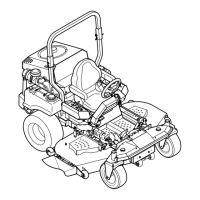
